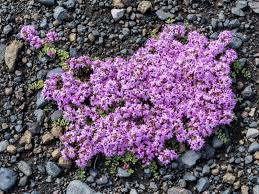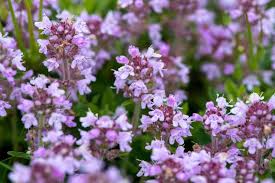
Thyme is a culinary herb consisting of the dried aerial parts of some members of the genus Thymus of flowering plants in the mint family Lamiaceae. Thymes are native to Eurasia and north Africa. Thymes have culinary, medicinal, and ornamental uses. The species most commonly cultivated and used for culinary purposes is Thymus vulgaris, native to SE Europe.



Thyme is best cultivated in a hot, sunny location with well-drained soil. It is generally planted in the spring, and thereafter grows as a perennial. It can be propagated by seed, cuttings, or dividing rooted sections of the plant. It tolerates drought well. The plant can take deep freezes and is found growing wild on mountain highlands.It grows well on dry slopes. It can be pruned after flowering to keep fromgetting woody.
Culinary uses
Thyme is a versatile herb with a distinctive flavor profile characterized by its earthy, slightly minty, and slightly floral notes. It's a staple in Mediterranean cuisine but is also used in various culinary traditions around the world. Here are some common culinary uses of thyme:
Whether you're using fresh thyme or dried thyme, its versatile flavor makes it a valuable addition to a wide range of dishes, from simple weeknight meals to elaborate dinner party fare.
Nutrition facts
Here's a basic nutritional breakdown for dried thyme per 1 tablespoon (1.7g) serving:
Thyme is low in calories and fat, while providing a small amount of dietary fiber and protein. Additionally, it contains various vitamins, minerals, and antioxidants, including vitamin K, vitamin C, manganese, iron, and calcium. While these values are based on dried thyme, fresh thyme would have similar nutritional content on a per-weight basis. Remember that the nutritional content of herbs can vary slightly based on factors such as growing conditions and processing methods.

Address: B23-2, Khayam Complex, Hormozan St., Phase 2, Sanat Sq., Tehran, Iran
Tel: +98 21 88 08 77 01
Mobile: +98 912 502 51 47
All services and products of this site, as the case may be, have the necessary licenses from the relevant authorities and the activities of this site are subject to the laws and regulations of the Islamic Republic of Iran


